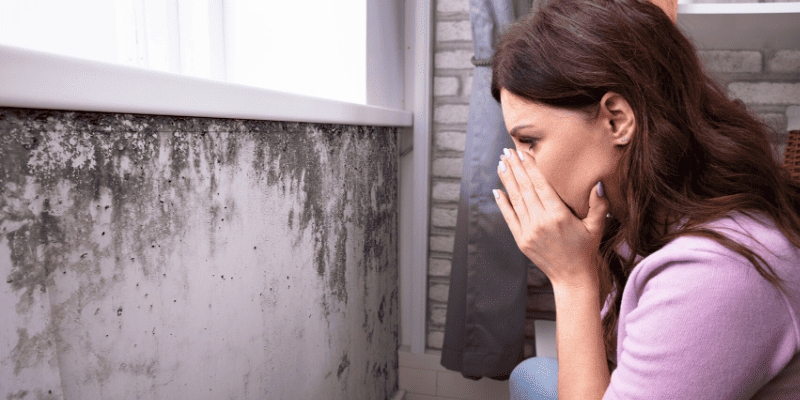Have you been inundated with ominous and threatening information about the many dangers and hazards produced from toxic black mold when found growing within an indoor personal environment? Most of the info gathered and published today about stachybotrys chartarum, aka black mold, is pack full of daunting health risks and adverse impacts to the environment’s air quality in which this form of mold is found growing and thriving. Although this form of mold does produce potentially toxic pollutants into the environment that can disrupt both the health of those exposed to the mold and the IAQ in this indoor space, there is a lot of misinformation regarding these issues elicited by black mold.
According to the Centers for Disease Control and Prevention (CDC), the coined term for Black Mold, “toxic black mold” is an inaccurate depiction of this mold species. While certain mold species, like stachybotrys chartarum are toxigenic where they can produce toxins into the environment, the mold species themselves are not toxic, or poisonous. These hazardous toxins called mycotoxins produced from this type of mold should be considered as the same level of threat as other common household molds that you are likely to find growing in this indoor environment.
In this article we are going to discuss the dangerous components of black mold in indoor environments and learn how to identify and find black mold in your home so that you can quickly neutralize and remove the black mold from both the surfaces and the air of the indoor environment.
Black Mold vs Mold
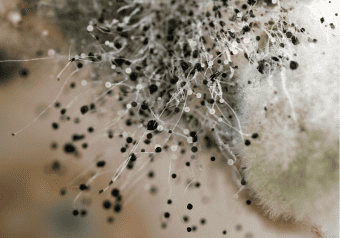 Mold is classified as a fungus that’s versatility allows for this microorganism to grow in different environments, including both indoor and outdoor spaces. There are over 100,000 different types of molds and species that can all range in impact when found growing and thriving within these environments, especially a home or other personal indoor environment. Typically, mold will be found in areas where there is moisture, humidity, darkness, and oxygen that all allow the mold species to grow rapidly in the indoor space. As mold begins to form in your personal indoor spaces, there will be a need for mold identification to help determine the overall severity that the mold can have on the indoor environment.
Mold is classified as a fungus that’s versatility allows for this microorganism to grow in different environments, including both indoor and outdoor spaces. There are over 100,000 different types of molds and species that can all range in impact when found growing and thriving within these environments, especially a home or other personal indoor environment. Typically, mold will be found in areas where there is moisture, humidity, darkness, and oxygen that all allow the mold species to grow rapidly in the indoor space. As mold begins to form in your personal indoor spaces, there will be a need for mold identification to help determine the overall severity that the mold can have on the indoor environment.
When it comes to determining black mold vs mold inside of your home, there are many key characteristics that can give away to black molds identity. Black mold will have a distinctive greenish-black appearance and will usually be found growing on material with high cellulose and low nitrogen content such as fiberboard, paper, dust, and lint. This type of mold is known for spreading aggressively in environments and thus you may see the mold start to develop at alarming rates, spreading on the surfaces in your home. In addition, black mold in compared to other household molds like Cladosporium, penicillium, aspergillus, and Alternaria, will produce potentially severe adverse reactions fairly quickly and thus the health of the occupants in this environment may be a great indication of black mold growth versus common household mold growth.
Signs of Black Mold
The process of identifying and classifying a specific mold species found in your home can be a difficult task, but even more difficult is actually locating the specific signs of black mold that lets you know that there is some species of mold growing in your home, sometimes growing in the most unsuspecting of places. As we discussed earlier, mold is attracted to many different environmental conditions such as moisture intrusions, little light in the environment, warm and humid conditions, and a food source like paper, fiberboard, etc. And thus, when these conditions become noticeable and apparent in your home this can be the production or development of mold species including black mold in your home.
Among other signs of black mold in a home, the major things that will become apparent in the environment is the distinct color that black mold takes on when growing on the surfaces of your home, the specific moldy smell hanging in the air, and the blatantly obvious bout of health side effects occupants experience when exposed to this environment.
What Does Black Mold Look Like
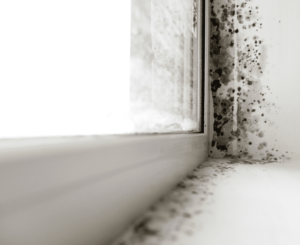 The appearance of black mold is probably one of the most unmistakable characteristics of this species of mold that will usually give away to its identity. Most molds can come in an array of colors, sizes, and shapes that will differentiate each mold from one another. Color is typically one of the most utilized method for mold identification, especially when looking for black mold species. The mold presence and appearance in your home will develop as mold spores, also known as molds reproductive spores, travel throughout the indoor environment and latch onto different surfaces to begin its growth rampage in the space.
The appearance of black mold is probably one of the most unmistakable characteristics of this species of mold that will usually give away to its identity. Most molds can come in an array of colors, sizes, and shapes that will differentiate each mold from one another. Color is typically one of the most utilized method for mold identification, especially when looking for black mold species. The mold presence and appearance in your home will develop as mold spores, also known as molds reproductive spores, travel throughout the indoor environment and latch onto different surfaces to begin its growth rampage in the space.
When it comes to what black mold looks like as it is found growing in your home, the typical appearance will include a slimy texture that takes on the features of a dark-greenish sometimes black looking coloration that is not often found in other mold species, making it unique to the stachybotrys chartarum species (black mold). According to Moldpedia, black mold, like most molds, is attracted to moisture and thus if a strong moisture presence is spotted near the mold growth site than chances are high that black mold may be the cause to dark discoloration on the surfaces.
Does Black Mold Have a Smell?
Stachybotrys chartarum (black mold) thrives and feeds off of organic material on the surfaces of your home including walls, under carpets, behind drywall, and even inside of insulation. As the mold species begins to consume these materials it will lead to the excretion of the materials into the environment which will tend to initiate the development of a distinctive musty odor that is commonly correlated with mold growth. For those individuals who have experienced the debilitating growth of black mold in their home, they have described the odor produced from this mold species to be similar to that of rotting wood or paper, and even dirty wet socks.
What are the Side Effects of Black Mold
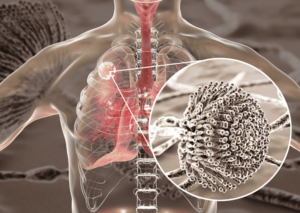 One of the major concerns when dealing with black mold exposure and growth in a home is the potential impact it can have on the health of those who are frequently exposed to this “toxic” black mold species in the environment. The overall symptoms and health effects that black mold can produce and elicit in those exposed can range from a wide variety of health problems that will vary depending on the environment, the length of exposure, and the amount of black mold present in the environment.
One of the major concerns when dealing with black mold exposure and growth in a home is the potential impact it can have on the health of those who are frequently exposed to this “toxic” black mold species in the environment. The overall symptoms and health effects that black mold can produce and elicit in those exposed can range from a wide variety of health problems that will vary depending on the environment, the length of exposure, and the amount of black mold present in the environment.
Stachybotrys chartarum is known to produce and emit spores into the environment to feed on organic materials in the home in an attempt to grow and thrive on other surfaces in this environment. These tiny spores can create a range of different health hazards if inhaled or ingested, as they can reach the deepest recesses of the lungs and potentially enter into the bloodstream, which can cause significant health issues. The most common symptoms of black mold exposure and side effects that are triggered by those exposed to black mold, according to HGTV, include the following;
- Chronic coughing
- Sneezing
- Irritation to the eyes, mucus membranes of the nose and throat
- Rashes
- Chronic fatigue
- Headaches
Is Black Mold Dangerous in a Home?
When it comes to black mold growth in a home, you may be wondering is black mold dangerous to your health and your environment? The hazardous component to black mold when found growing within your home are the toxins that it may produce into the air, specifically a toxin called mycotoxins. Mycotoxins, however, will not always be produced when black mold is present, as the conditions needed for this toxin to be produced are not fully understood to this day. Yet, the strain produced from black mold with or without mycotoxins still have the power to cause an array of respiratory, immunologic, and neurologic problems and symptoms, according to a study performed by Michigan State.
How to Find Black Mold in Your Home
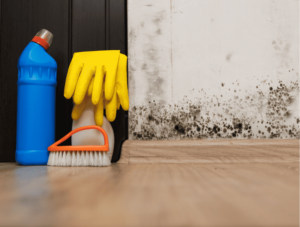 The hunt for black mold in your home is not an easy one, as the chances of locating black mold growth just based off of its appearance, smell, or even the location of its growth is nearly impossible. The optimal way to identify black mold growth in your home is to have a mold specialist test the mold in the home under a microscope to determine its mold classification. However, testing is fairly costly when it comes to sampling your home and according to the CDC, performing these tests are not highly necessary since any mold can cause health problems. Therefore, the best solution to removing any type of mold is to use two processes; a mold remediation specialist and to implement indoor air quality solutions in the home to remediate the air space.
The hunt for black mold in your home is not an easy one, as the chances of locating black mold growth just based off of its appearance, smell, or even the location of its growth is nearly impossible. The optimal way to identify black mold growth in your home is to have a mold specialist test the mold in the home under a microscope to determine its mold classification. However, testing is fairly costly when it comes to sampling your home and according to the CDC, performing these tests are not highly necessary since any mold can cause health problems. Therefore, the best solution to removing any type of mold is to use two processes; a mold remediation specialist and to implement indoor air quality solutions in the home to remediate the air space.
Mold remediation specialists are a great resource for any species of mold removal in an indoor environment, including black mold growth. These trained mold specialists are qualified and effective at removing any traces of mold found within your home by using safety precautions and secured methods of removal. However, after a mold remediation job is completed inside your personal indoor environment, you may also want to consider the addition of air quality solutions to help combat any excess mold spores or microorganisms left floating within the home’s air space.
Mold Air Purifier for a Home
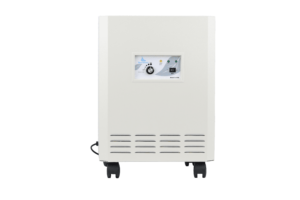 Indoor air quality solutions are a great way to combat and remove any mold microorganisms found floating in your home’s airspace, and one of these solutions that are most popularly utilized and effective is a mold air purifier. An air purifier works by filtering the indoor air of pollutants that are compromising the indoor air quality in the environment, such as microorganisms like mold spores. The EnviroKlenz Mobile UV System is a unique air purification device that uses a two-stage filtration process with the addition of UV-C lights for microorganisms’ destruction.
Indoor air quality solutions are a great way to combat and remove any mold microorganisms found floating in your home’s airspace, and one of these solutions that are most popularly utilized and effective is a mold air purifier. An air purifier works by filtering the indoor air of pollutants that are compromising the indoor air quality in the environment, such as microorganisms like mold spores. The EnviroKlenz Mobile UV System is a unique air purification device that uses a two-stage filtration process with the addition of UV-C lights for microorganisms’ destruction.
The first stage filtration is a proprietary VOC cartridge that contains the EnviroKlenz earth mineral technology for broad spectrum neutralization of noxious and toxic chemicals and odors in the air. And the second stage filtration is a hospital-grade HEPA filter that removes fine particulate matter including microorganisms (mold spores, bacteria, and viruses) larger than 0.3 microns in size from the air at a 99.99 percent efficiency. EnviroKlenz has placed two UV-C lights strategically above the HEPA filter to provide a high efficiency of kill and destruction to any microorganisms collected on the filter including collected mold spores.
Article Sources:
- Centers for Disease Control and Prevention (CDC): Facts About Stachybotrys Chartarum and Other Molds (link)
- Moldpedia: Toxic Black Mold (Stachybotrys) (link)
- HGTV: Black Mold Symptoms and Health Effects (link)
- Oxford Academic Society of Toxicology: Stachybotrys chartarum, Trichothecene, Mycotoxins, and Damp Buildings – Related Illness: New Insights into a Public Health Enigma (link)
UV Mobile Air System
✓ Patented earth mineral technology works to attack VOCs and break them down on a compound level
✓ No chemicals or masking agents
✓ Will not release any chemicals back into your environment
✓ UVC lamps are continuously shining on the collected organisms with high effeciency of kill and destruction
EnviroKlenz® Medical Disclaimer:
“Any information that is provided on this website is not for the use by any commercial or personal entity without expressed written consent of the blog author. The material and statements illustrated within this blog are not intended to diagnose, treat, cure, or prevent any diseases or medical conditions. Nor does the author in any way guarantee or validate the validity, totality, or efficacy of any claims and will therefore not be held responsible for the content of any claims. Always consult your medical physician for any specific medical advice or recommendations.”








